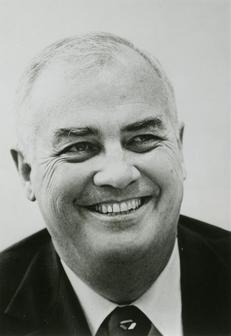|
J. William T. "Bill" Youngs, The Fair and the Falls: Spokane’s Expo ’74: Transforming an American Environment, Chapter Eight
|
"King Cole" Courtesy of the Spokesman Review
|
Chapter Eight: King Cole and The Heart of a City
|
SummaryIn order to promote their plans for urban renewal, Spokane Unlimited decided to hire a professional urban planner, King Cole, to implement their ideas. Cole had recently supervised the renewal of San Leandro, California, and was enthusiastic about the possibilities in Spokane. He quickly became acquainted with both the city's business elite and average citizens, and set about forming an innovate plan to rescue Spokane "heart."
|
Author reads from the Text
"Reshaping urban environments"
King Cole described his choice of career: "I had been reading a lot about the field of urban development. Urban renewal was an up-and-coming thing at that time. Only a few cities in the United States were getting involved in it to any degree." Cole was intrigued by the field, "casting around," trying to figure out how to make a start. At the time "they didn't even give a degree in urban development and planning." But the idea of reshaping urban environments fascinated him. Cole had spent much of his adolescence and young adulthood in planned communities -- church schools and a mission -- and his experience in these settings may have sparked his interest in cooperative schemes for municipal reform: "I just seemed to understand what was going on in that aspect of the community."
"The Heart of the City"
"Utilizing one of the favorite images of city planners, Cole said, 'In my experience, the total community is a body -- it has its parts, important as they are -- hands, feet, arteries. These are the residential, industrial, traffic..., and these organisms are all critically important to the community.' While recognizing the importance of the city as a whole, Cole needed to emphasize the importance of the downtown core. He continued with the body metaphor: 'To me, the center of the city, forgetting its retail value, just by geographical and psychological position, the center of the city is its heart. And with any organism, no matter how healthy the extremities and other members are, if the heart is sick, the total community is going to get sick.'"

